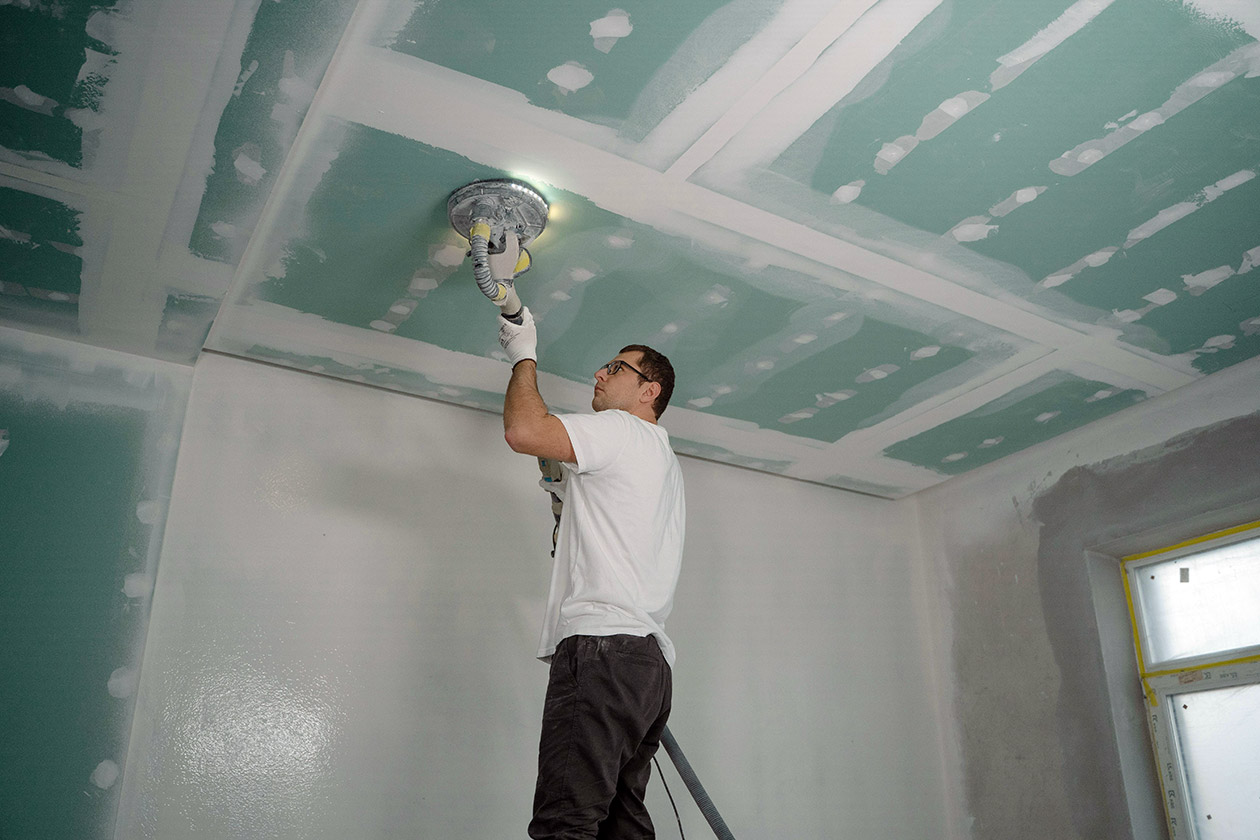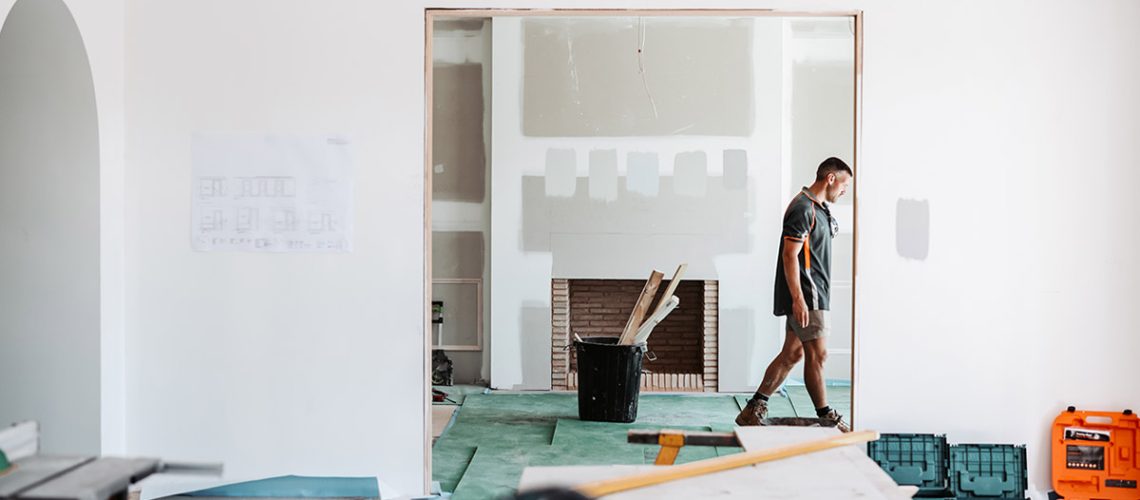You’re planning a renovation and excited about transforming your space. But amidst the flurry of decisions, one question lingers: Should you paint before or after the renovation work? It’s a common dilemma, and the answer directly impacts your project’s efficiency and final outcome. We’ll break down the definitive answer, explore exceptions, and provide actionable tips to help you make the best choice for your renovation.
The Verdict: Paint AFTER Renovation
Generally, painting after your renovation is the most practical and cost-effective approach. This minimises the risk of damage to your freshly painted walls and ensures a cleaner, smoother finish.
Why is painting after better? Renovations generate dust, debris, and potential bumps and scrapes. These can easily damage wet paint, leading to touch-ups or even repainting. Moreover, painting on bare surfaces after renovation allows for easier preparation and a more flawless final look.
When Painting BEFORE Makes Sense
While painting after renovation is generally recommended, certain situations warrant painting beforehand.
- Extensive Preparation: If your renovation involves significant structural changes, requiring extensive patching and sanding, painting before these tasks can be beneficial. The initial paint layer acts as a base, allowing you to address imperfections during the renovation process and achieve a smoother finish with the final coat.
- Bold Colour Choices: Using dark or bold paint colours often necessitates multiple coats for optimal coverage. Painting these colours before renovation allows you to achieve the desired depth and richness without worrying about perfect coverage on newly installed features.
- Matching Existing Colours: If your renovation involves preserving existing painted elements and you need to match those colours precisely, painting the new walls beforehand ensures colour consistency throughout the space.
It’s crucial to remember these are exceptions. Thoroughly assess your renovation’s scope and specific needs before deciding to paint beforehand.
Why Painting After Renovation Wins
Let’s explore the specific advantages of painting after your renovation is complete:
- Pristine Finish: Painting after ensures a cleaner, smoother finish, free from dust and debris that inevitably accompany renovation work. You’ll achieve a flawless look without the frustration of repainting or touch-ups.
- Protection for New Surfaces: Newly installed flooring, cabinets, countertops, and fixtures remain protected from paint splatters or spills. You can focus on the painting process without worrying about damaging your beautiful new surfaces.
- Easier Touch-Ups: Minor imperfections, scuffs, or scratches that occur during the renovation are easily addressed during the final painting phase. You’ll have a seamless blend, achieving a flawless, polished look.
“The order of flooring and painting can be tricky,” explains professional painter Maz Nazzimi. “If you’re installing new flooring that requires sanding or staining, it’s best to do that before painting. However, if you’re laying down pre-finished flooring, you can paint first and protect the new floors with drop cloths during installation.”
Drawbacks of Painting Before You Renovate
While painting before renovation may seem tempting in certain cases, consider the potential drawbacks:
- Damage Risk: Construction dust, debris, and accidental impacts can easily damage fresh paint, leading to unsightly marks and the need for repainting.
- Costly Repainting: If significant damage occurs, you might face the additional expense and time commitment of repainting sections or even entire walls.
- Limited Colour Matching: If you plan to incorporate new drywall or other materials during your renovation, achieving a precise colour match with existing paint can be challenging. The new surfaces might not absorb paint in the same way, leading to noticeable differences in shade or texture.
Dust and Debris Management During Renovations
Managing the unavoidable dust and debris is one of the most significant challenges when deciding whether to paint before or after renovations. If you opt to paint first, there are specific strategies you must consider to keep your newly painted surfaces looking pristine throughout the renovation process.
Strategies for Managing Dust if Painting First
It’s essential to minimise the spread of dust to maintain the integrity of your fresh paint job. Here are some practical tips:
- Use heavy-duty plastic sheeting to seal off the painted area from the rest of the renovation space.
- Keep the air moving with fans and maintain negative pressure to prevent dust from settling on wet paint.
- Regularly clean the work area to remove dust before it can circulate and reach the painted surfaces.
- Consider using air purifiers or dust extractors, especially in areas nearest to the painted zones.
Protective Measures for Freshly Painted Surfaces
When painting preemptively, safeguarding the new coat is crucial:
- Apply a strong adhesive tape and plastic covering over the painted surfaces to protect against scratches and accidental spills.
- Place drop cloths or protective sheets on the floor below painted walls to catch falling debris.
- Ensure that contractors and workers are aware of the painted areas and caution them to work carefully around these zones.
- Limit the touching or cleaning of freshly painted surfaces until the entire renovation project comes to an end.
While painting before renovations can be advantageous for several reasons, it requires meticulous dust and debris management strategies to protect your investment. Careful planning and proactive measures are vital to ensure that at the end of the renovation process, your painted surfaces remain as vibrant and flawless as the day they were finished.

Should You Paint Before or After Carpentry?
Just like with a full-scale renovation, the answer to whether you should paint before or after carpentry depends on the specific project and your priorities. However, here’s a breakdown to help you decide:
Generally, it’s best to paint AFTER carpentry for the following reasons:
- Avoid Damage: Sawdust, wood shavings, and accidental bumps can damage fresh paint. Painting afterwards ensures a cleaner finish.
- Easier Touch-ups: You can easily address any minor imperfections or nail holes left after carpentry during the painting process.
- Protection for New Woodwork: Painting afterwards protects newly installed trim, doors, or other woodwork from paint splatters or spills.
When Painting BEFORE Carpentry might make sense:
- Intricate Carpentry: If the project involves intricate carpentry with many small pieces or detailed cuts, painting those pieces before installation can provide cleaner lines and easier access to all sides.
- Dark or Bold Colours: Similar to full renovation projects, painting before can be beneficial if you’re using dark or bold colours that require multiple coats. This allows you to achieve the desired depth of colour without worrying about perfect coverage on the newly installed carpentry.
- Specific Finishing Techniques: If you’re using a particular painting technique, like a distressed look or a multi-layered finish that needs to be partially sanded, doing this before carpentry can be more efficient.
Tips for a Successful Renovation and Paint Job
Here are some practical tips to ensure a smooth and successful renovation and painting process:
- Consult with your Contractor: Discuss the scope of your renovation with your contractor and seek their professional opinion on the optimal painting order and how to prepare your home for painting. They have experience and can assess potential challenges specific to your project.
- Prioritise Protection: If you decide to paint before renovation, take steps to protect freshly painted walls. Use drop cloths, plastic sheeting, and painter’s tape to shield surfaces from dust, debris, and accidental damage.
- Consider Primer: Applying a primer before painting, especially on new drywall, helps ensure a smooth, even finish. Primer creates a uniform surface for the paint to adhere to, resulting in better coverage and a more professional look.
Ultimately, the decision of whether to paint before or after your renovation depends on your specific project’s characteristics and your priorities. While painting after is generally recommended, understanding the exceptions and considering the potential drawbacks can help you make an informed choice. By carefully planning, consulting with professionals, and prioritizing protection, you can ensure a successful renovation and a beautiful, freshly painted space that you’ll enjoy for years to come.

